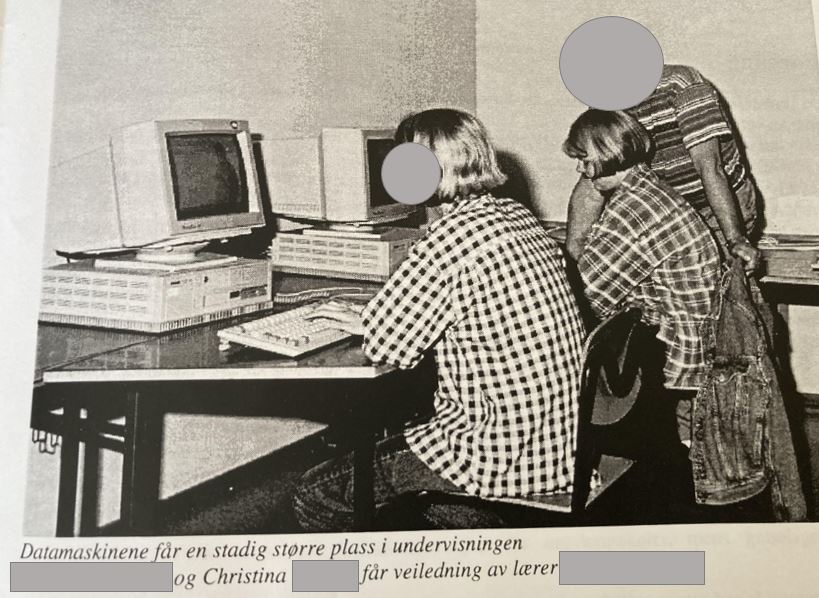Topic 1 and PBL-group work
So the first weeks of this experience have come to an end. I will admit that I felt a bit confused in the beginning, with all the new information and all the new people. But connecting to my PBL group, and starting to work with them on Topic 1 have made me feel a little bit less stressed about ONL. I really admire the two leads who not only dared to go first but also managed the work things out really great. Thanks guys! I think we have a very warm and permissive atmosphere in the group. And a lot of fun!
Last week we focused on the F and I-parts of our FISH-document, and this week we focused on the S and H. One of our common goals is to use different tools for each topic to present, and this time we have chosen a Miro-board. We divided the topic in three focus areas, and my focus area for further investigation was on online policies and strategies for managing the digital traces that we leave behind. I found a very useful article [1], and added some content from it to our board. One take-home-message from the article that I will bring with me is that “Most students will not object to your making information about them available to other students and to course site visitors. However, most students will appreciate knowing that approving access by others to such material is entirely voluntary. I guess this also applies to us as educators. I some topics of our teaching or research areas we might feel comfortable with openly sharing content, in other areas we might only want to share our material in locked communities. I think that a combination of information and awareness about this might be one key. Students (and educators) need to be aware of what they do “sign up for” when posting material. And having a strategy for what to share and what not to share.
Visitors and Residents
I enjoyed last week’s webinar on the ´Visitor and Resident´-model. Also I read the recommended article [2] and watched the recommended films [3-5]. After a reference from one of my co-PBLers I also checked out David Whites personal site [6]. Havent´s seen the films or looked at his site yet? Definitely worth a visit!
At the webinar we were invited to draw our own ´Visitors and Residents´map, and so I did. I think it is clear from the map that I divide my life into a personal space and a professional space without mixing the use of tools. Workwise I am somewhat of a traditionalist being a visitor of e-mail, Skype, LinkedIN and my institutions Intranet. A resident only with Zoom (clearly since I have worked from home for over a year, I have been connected to Zoom a lot!). Personally I am a resident of social media like Instagram and Snapchat and use it to connect with friends and family:

I guess a lot have happened since I first tried browsing the Internet using AltaVista® back in 1995. The photo below shows me in high school (“högstadiet” in Swedish). And as you can see, our hairstyles back then was copied directly from the Swedish artist Robyn 
 Computers are gaining more and more space in teaching.XX and Christina are guided by teacher XX. Picture from my Highschool yearbook 1995.
Computers are gaining more and more space in teaching.XX and Christina are guided by teacher XX. Picture from my Highschool yearbook 1995.
Also, I have to mention: Twitter!
As for Twitter I created an account on Monday, 5 minutes before the start of the ONL tweetchat. My first thought was that the speed was super high. Hard to keep up the pace to follow all the new posts with the hashtag #ONL211. Or maybe that was my own lack of speed, since Twitter was absolutely new to me. But then one of the facilitators wrote that it is ok to be slow, which I suppose is true whenever trying things for the first time. Long story short: I cannot say that I immediately felt thrilled about Twitter, and I do not know if I will ever use it as a tool in my teaching. But I each case- now I have tried it.
And now some rest…
In IRL life, this week I have been bugged by some angry virus. So another new experience for me this week was doing a Covid-test. Even with several years of experience working in health care, self-sampling with a q-tip up the nose felt somewhat strange and awkward. Luckily the Covid-test came back negativ. Yet I look forward to have some rest this weekend.
Wish you all a good one!
Best, Christina
References:
[1] Waterhouse S. and Rogers R.O. (2004) The Importance of Policies in E-learning Instruction. Educause Quarterly, 27(3), 28-39.
[2] White, D. and Le Cornu, A. (2011) Visitors and residents: A new typology for online engagement. First Monday, 16(9).
[3] David White: Visitors and residents (part 1) Film. https://www.youtube.com/watch?v=sPOG3iThmRI
[4] David White: Visitors and residents- Credibility (part 2) Film. https://www.youtube.com/watch?v=kO569eknM6U
[5] Dough Belshaw: The essential elements of digital literacies. Film. https://www.youtube.com/watch?v=A8yQPoTcZ78&t=500s
[6] http://daveowhite.com (website).